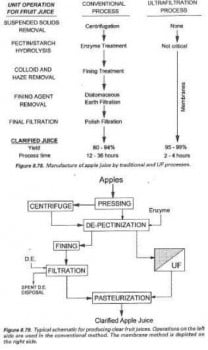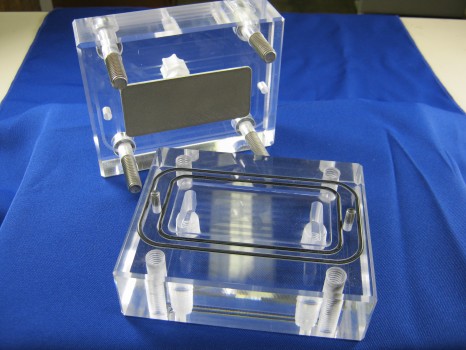Over the years we have seen an increased use of filtration equipment in juice processing, particularly regarding ultrafiltration (UF) or microfiltration (MF)for the clarification of apple juice. Since it has been demonstrated that membrane filtration can produce yields of 95%-99% - compared to only 80-94% through conventional processes – it is no wonder that filtration methods are growing in prevalence. The greater yield combined with the reduced time and labor costs have translated to hundreds of thousands of dollars saved for juice processing plants! If you are considering juice filtration, here a couple of tip
Monthly Archives: October 2010
- Tuesday, October 26, 2010
- Monday, October 18, 2010From this recent article in NanoLetters, the American Chemical Society Journal, comes information about a new form of water sterilization out of Stanford University that takes advantages of the unique bacteria-killing properties of silver (the vampire and werewolf killing properties of silver have yet to be proven). Basically, the proposed multiscale device would perform high speed electrical sterilization of water using a combination of silver nanowires, carbon nanotubes, and cotton. The end result is that when operating at 100,000 L/(h m2) this device can inactivate greater than 98% of bacteria with only several seconds of total incubation time.The author’s of this paper mention two interesting reasons for w
- Tuesday, October 05, 2010
One of the biggest issues for crossflow filtration is figuring out how to control the loss of permeate flux in the process. Whether using reverse osmosis (RO), ultrafiltration (UF), or microfiltration (MF), the loss due to polarization and membrane fouling prevents many potential users in the biological or chemical processing fields from adopting this method. If you are using crossflow filtration, or considering using it, and fear the effects of permeate loss, then you may want to consider this technique courtesy of North Carolina A&T University and the U.S. National Energy Technology Laboratory. Their study (see here) produced drastically improved results by implementing flow reversal to enhance the membrane flux. They found that by periodically reversing the flow direction of the feed stream at the membrane surface results





![Join Sterlitech at BIO 2024 [Booth #5558]: Exploring the Future of Biotechnology](https://www.sterlitech.com/media/magefan_blog/b4.jpeg)

